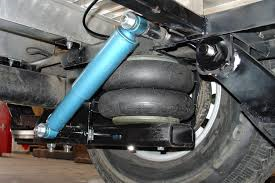
How Air Suspension Systems Work: Instead of steel or leaf springs, an air suspension system typically consists of air springs, also known as plastic/airbags, sturdy rubber, and an air-line system, connected to an onboard air compressor, valves, solenoids, all under electronic controls. The built-in compressor is an electric pump, used to feed air to the air bags via multiple lines. Valves play a vital role in air path control, letting air enter different sections of the system. In electronic systems, when the system accommodates for different driving conditions, solenoids inflate and vent the airbags by opening and closing to adjust the quantity of air entering each airbag. An electronic control module regulates the on/off switches, monitors pressure and manages ride height. Air springs are flexible and have a certain amount of elasticity. The more they are compressed, the stiffer they are. The principal difference between a traditional shock or strut is that they hav ... read more